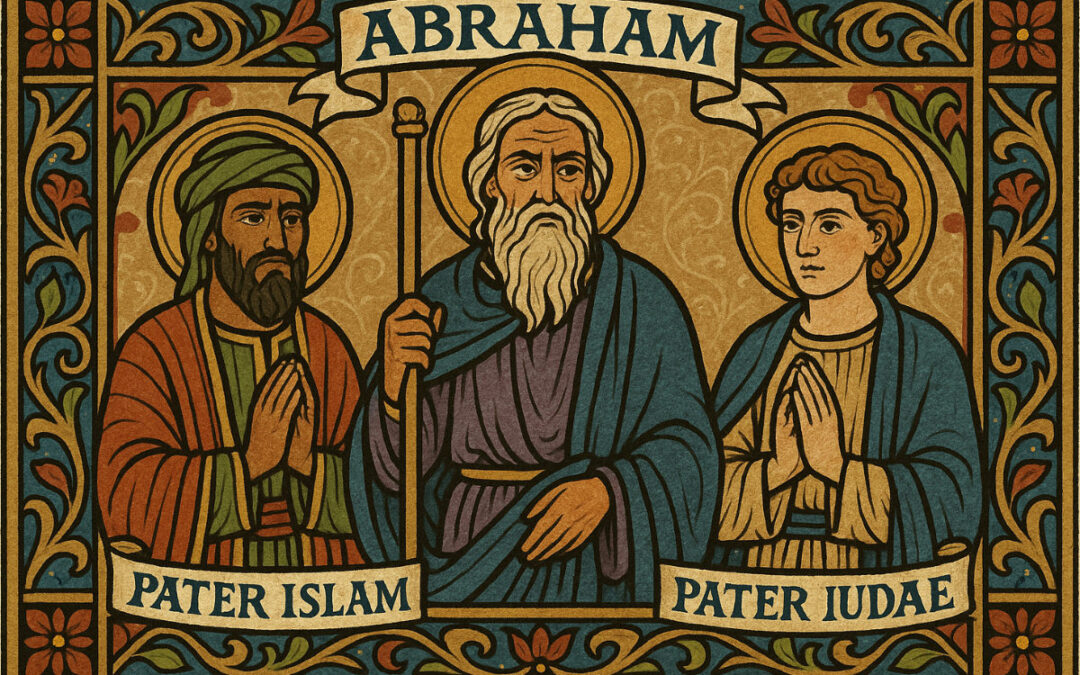The Case for Ethnogenesis Over Genetic Descent
The question of Jewish identity has puzzled scholars, theologians, and individuals for centuries. Are Jews an ethnic group? A religious community? A people bound by shared ancestry? Recent genetic research, combined with careful analysis of Jewish law and history, suggests a more complex picture than traditional narratives often present—one that challenges assumptions about the relationship between genetics, religion, and ethnic identity.
The Logical Paradox of Matrilineal Descent
Jewish identity, according to traditional Jewish law (halakha), follows the matrilineal line: you are Jewish if your mother is Jewish. This principle, established during the rabbinic period (roughly 200-500 CE), creates an interesting logical puzzle when we trace it backward through history.
If Jewish identity can only be transmitted through mothers, then theoretically, every Jewish person today should be able to trace an unbroken chain of Jewish mothers back to the women of ancient Judah. But here’s the catch: the matrilineal rule didn’t exist during biblical times, when tribal identity generally followed patrilineal descent.
This creates a historical discontinuity. How can a people claim continuous descent from ancient Israelites using a system of identity that those ancient Israelites didn’t actually use?
The Mathematics of Population Genetics
The implications become even more complex when we consider the mathematics of genetic inheritance. If Jewish men who married non-Jewish women had children who were not considered Jewish, then over millennia, the Jewish population could only grow through Jewish women. Any genetic material from Jewish men who “married out” would be permanently lost to the Jewish people.
Yet genetic studies consistently show that Jewish populations worldwide share substantial Middle Eastern ancestry—ancestry that comes through both maternal and paternal lines. This suggests that either:
- Massive conversion of non-Jewish women occurred throughout history, or
- The traditional narrative of unbroken genetic descent requires significant revision
Conversion and Cultural Transmission
The most logical explanation for this paradox is that Jewish identity has been significantly shaped by conversion, particularly of women who married Jewish men. This process would maintain the technical requirements of matrilineal descent while allowing for substantial genetic mixing with local populations.
This scenario explains several puzzling aspects of Jewish demographic history:
- How small Jewish communities could establish themselves in diverse geographic regions
- Why genetic studies show both Middle Eastern ancestry and significant local admixture
- How Jewish populations could grow beyond what a closed genetic system would allow
- Why there’s such genetic diversity within Jewish populations worldwide
Ethnogenesis: The Creation of Ethnic Identity
What emerges from this analysis is a classic case of ethnogenesis—the process by which ethnic groups form and develop their identity over time. Rather than being a simple genetic lineage from ancient Judah, Jewish identity appears to be a constructed ethnoreligious category that has evolved through several mechanisms:
Religious Framework: The development of halakhic rules that define membership, including conversion processes and matrilineal descent
Cultural Continuity: Shared languages, practices, literature, and religious observances that bind communities together across geography and time
Historical Memory: Collective narratives about shared origins, experiences of diaspora, persecution, and cultural achievements
Selective Ancestry Claims: Emphasis on connection to biblical figures and ancient Israel, while the actual genetic composition reflects a more complex reality
Implications for Understanding Identity
This analysis has several important implications:
1. Identity vs. Genetics
Jewish identity demonstrates that ethnic belonging can be powerfully “real” without requiring direct genetic descent from a specific ancient population. The strength of Jewish cultural continuity, community bonds, and shared historical experience creates authentic ethnic identity regardless of genetic composition.
2. The Power of Religious Law
The matrilineal principle shows how religious legal frameworks can shape ethnic boundaries in ways that transcend genetics. A theological decision made centuries ago continues to determine who is considered Jewish today.
3. Conversion and Ethnic Formation
The likely significant role of conversion in Jewish demographic history suggests that many ethnic groups claiming ancient origins may actually be amalgamations of various populations united under shared cultural-religious frameworks.
4. Challenging Essentialist Narratives
This case study challenges essentialist ideas about ethnicity being primarily about blood or genetics. Instead, it suggests that ethnic identity is often a complex construction involving law, culture, religion, and selective historical memory.
A Model for Understanding Ethnic Identity
Jewish ethnogenesis may actually represent a more common pattern than traditionally recognized. Many ethnic groups that claim ancient origins likely formed through similar processes of cultural amalgamation, religious framework development, and selective ancestry emphasis.
This doesn’t make these identities less “real” or meaningful. Rather, it demonstrates the remarkable human capacity to create durable, authentic communities that transcend simple genetic categories. Jewish identity’s persistence across millennia and continents, despite—or perhaps because of—its complex origins, testifies to the power of cultural and religious bonds in creating lasting ethnic identity.
Conclusion
The story of Jewish identity offers a compelling case study in how ethnic groups actually form and persist over time. Rather than being a straightforward genetic lineage from ancient Judah, Jewish identity appears to be the product of sophisticated ethnogenesis—the creation of ethnic identity through religious law, cultural practice, historical memory, and demographic mixing.
This understanding doesn’t diminish the authenticity or significance of Jewish identity. Instead, it reveals the remarkable complexity of ethnic formation and the power of cultural frameworks to create lasting communities that transcend simple biological categories. In an increasingly connected world where traditional ethnic boundaries are constantly being challenged and redefined, the Jewish experience offers valuable insights into how identity can be both constructed and deeply meaningful.
The implications extend far beyond Jewish studies, offering a lens through which to understand how many ethnic identities may have formed throughout history—not through pure genetic descent, but through the complex interplay of religion, culture, law, and collective memory that creates the communities we call home.
